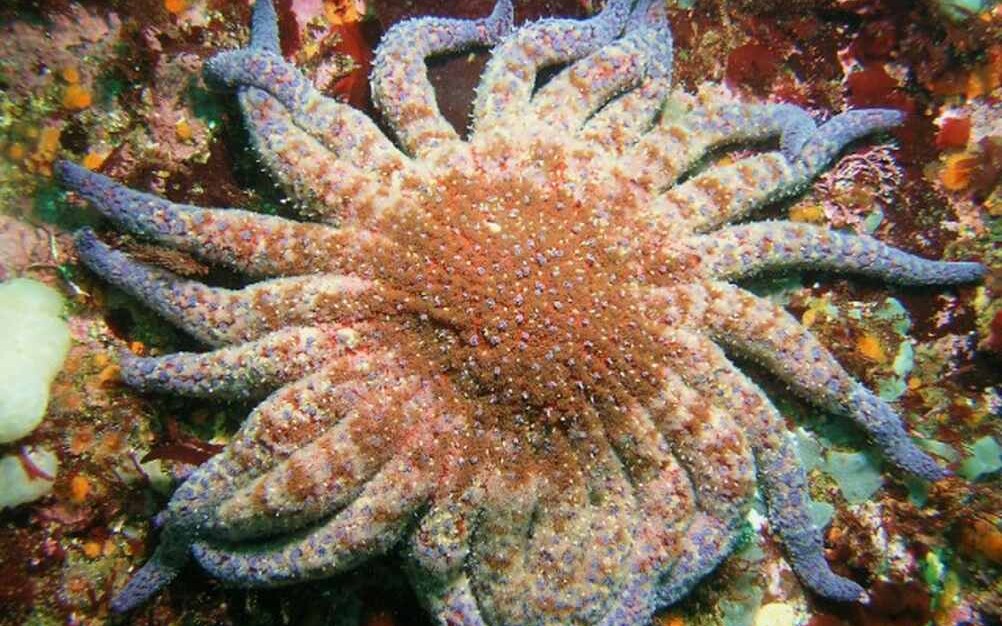
For years, a wasting disease has been turning sea stars to goo off the California coast. Scientists now finally know the cause, and are beginning to fight back.
Whether it has over 20 arms like the sunflower sea star, or just 5, billions of Pacific sea stars were being wiped out by an unknown assailant.
After four years of experiments from a huge collaborative effort led by the California Institute of Marine Sciences, biologists finally identified the culprit: a kind of bacteria called Vibrio.
Devastating to coral, shellfish, and human beings, this strain of Vibrio has been labeled FHCF-3. The scientists determined it was the cause of the epidemic by examining what might be called the sea star’s blood. It doesn’t have blood as we would recognize it, but a circulatory fluid called coelomic fluid.
As to what is causing the spread of FHCF-3, ranging from Washington state down to the Baja Peninsula, the scientists point to warming waters.
“We have evidence that there is a link between increasing ocean temperatures and this sea star wasting disease epidemic,” said Melanie Prentice, one of the co-authors of the paper published on the discovery in Nature, to CBS News.
Sunflower sea stars, one of the species that’s been most affected, are voracious eaters of sea urchins. This slow motion game of lion and gazelle plays out on the seafloor and on reefs, and is a major cog in the overall machine of marine ecosystem stability.
ALSO CHECK OUT: 10,000 Young Corals Grown in Just Weeks by New Portable Spawning Lab in the Maldives
Themselves voracious eaters of kelp, the urchins were unleashed following the sea star’s decline, and like the bacteria that decimated the sea stars, the urchins devastated the kelp.
With the cause identified, a large collaboration involving Prentice’s Hakai Institute, as well as the universities of British Columbia and Washington, the Nature Conservancy, Tula Foundation, US Geological Survey, and the Washington Department of Fish and Wildlife, are beginning to plan strategies for the sea stars’ recovery.
MORE MARINE BALANCE: Out-of-Control Invasive Crab Species Has Met its Match: Cute and Hungry Otters
A breeding program for sunflower stars was set up between the Aquarium of the Pacific, the Birch Aquarium, the San Diego Zoo Wildlife Alliance, and the Sunflower Star Laboratory. Hundreds have already been raised, and biologists can now screen for the pathogen routinely.
Some of the juveniles are living in these aquariums, where members of the public can learn about the sea stars’ struggle to survive, and the critical role they play in the ecosystem.
WATCH the story below from CBS News’ ‘Project Earth’ segment…
SHARE The Star Of This Story And Its Road To Recovery With Your Friends…

